We started out at river level and made our way up the winding road with hairpin turns.
Machu Picchu was built in the late 1400's and early 1500's and was inhabited by the Incas for only 100 years. It is not know how it was built, why it was built, or what it was used for. There is also no evidence of why the Incas left after only 100 years.
The Incas built a canal with a 3% grade to bring water into Machu Picchu. They were masters of hydrology.
We made our way up the path (which is the last part of the Inca Trail into Machu Picchu). There are approximatley 14,000 - 15,000 miles of Inca trails in the Sacred Valley. Some still intact, and some no longer usable. You can see the town and the river below.
As we came around the corner at the top of the trail, we got our first glimpse of this amazing Inca City that somehow survived the Spanish Invasion of Peru that destroyed many of the other Inca cities.
What an honor to visit one of the seven wonders of the world and have time to explore every inch is it!
The semi-circular building below is the famous temple of the sun. The window faces east so the first sun of the summer solstice passes through this window.
The natural granite quarry on these mountains was used to build Machu Picchu.

These mountains are incredibly steep, adding even more mystery to how Machu Picchu was discovered and built.
Fourteen llamas live in Machu Picchu. Their only job is to keep the grass trimmed.
The Temple of three windows.
This stone is called the Intihuatana Stone, which in English means "The Hitching Post of the Sun". At midday on March 21st and September 21st, when the equinoxes occur, this stone casts no shadow. Intihuatana is thought to be the astronomical clock of the Incas.
All of the Intihuatana stones of the Incas were found and destroyed during the Spanish conquest, except for the one in Machu Picchu, because Machu Picchu was never found by the Spanish.
This little llama was hanging out in the shade of one of the buildings. She seemed to really enjoy our company and really like to be scratched on the head. She was very tame.
There are even Inca ruins on some of the nearby mountains.
We are now making our way back out of the park. If you look closely, you can see the winding road that the buses take to Machu Picchu.
This room is called the room of the condor. If you look closely at the pictures, you can see a stone condor.
The wings of the condor are the striped rocks in the back. The triangular rock in the foreground with a beak carved into it is the head of the condor.
The magnitude of these terraces is amazing!
We even got a passport stamp from Machu Picchu. A very fun souvenir!
Visiting Machu Picchu is an amazing and emotional experience for anyone who has a chance to visit, and the Andes Mountains that cradle it are spectacular on their own. We are humbled and astonished by the magnitude and complexity of what we have seen today.


























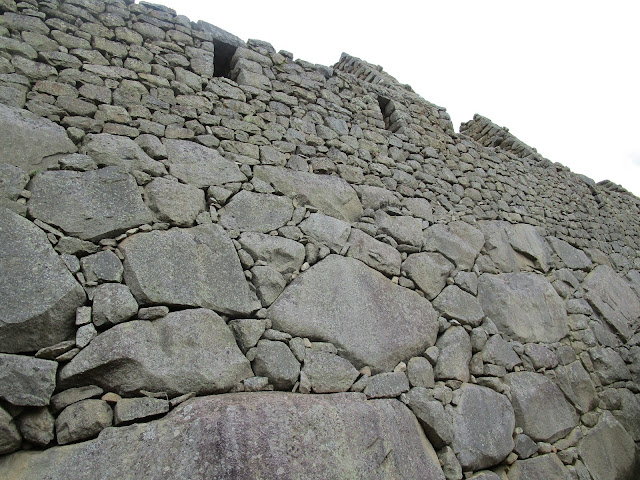










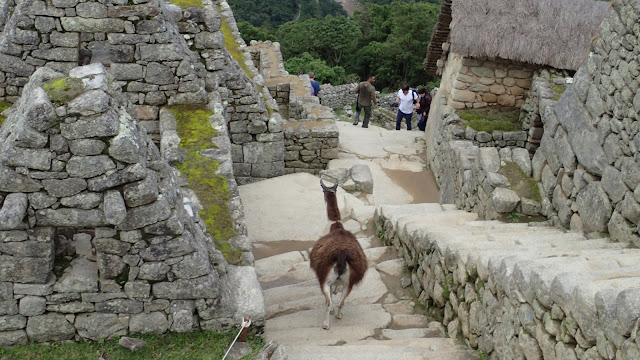

























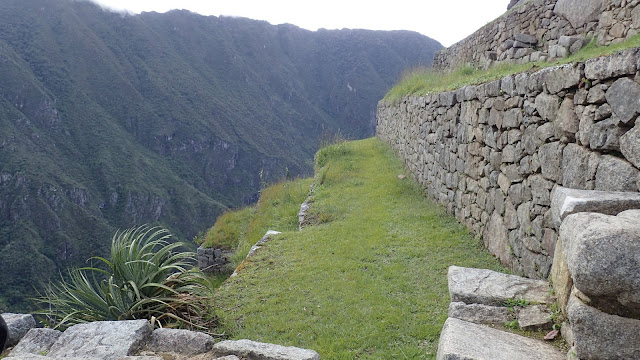



















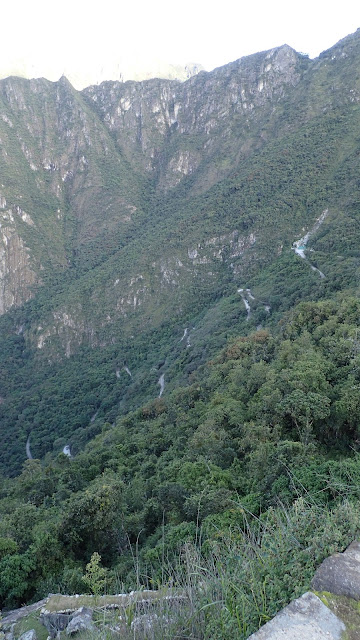









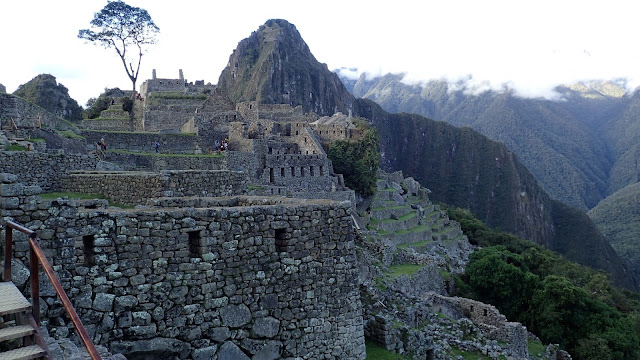







Just beautiful
ReplyDelete